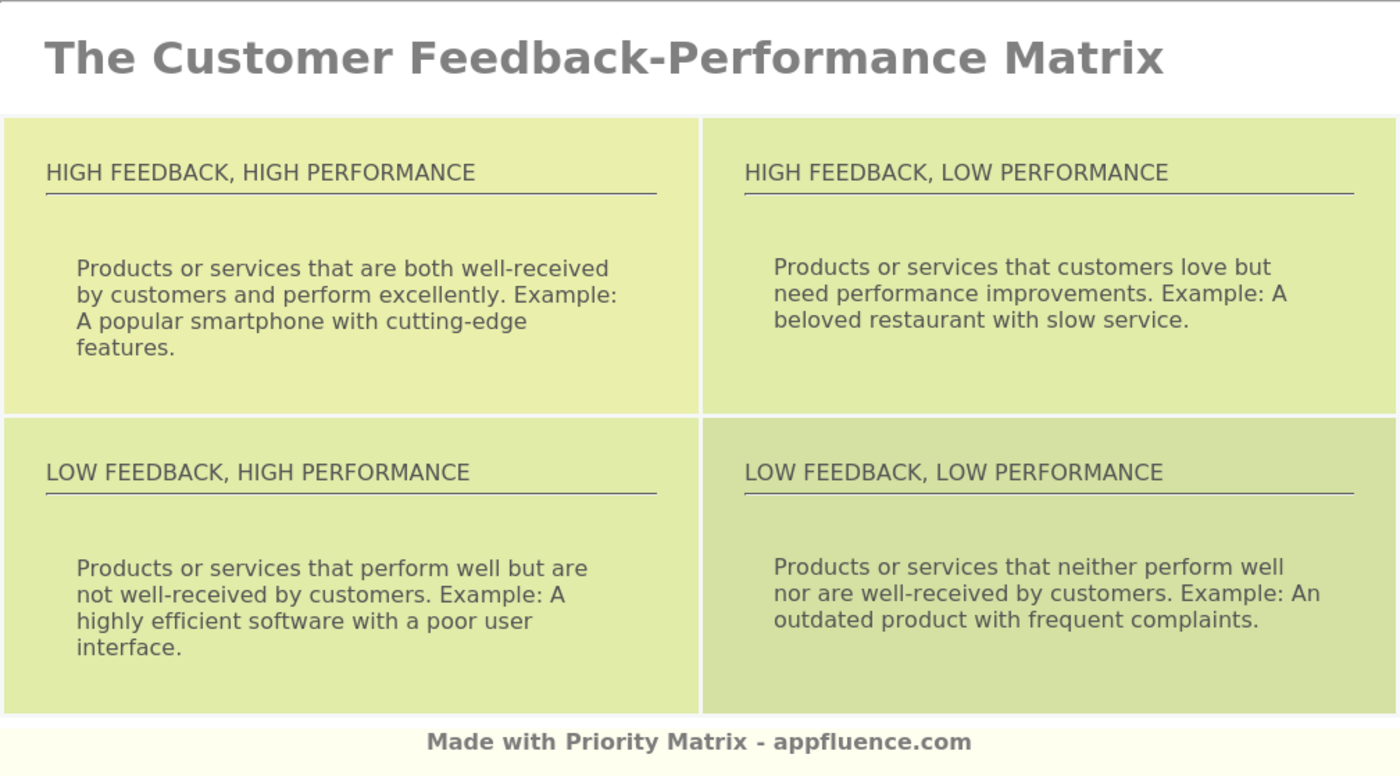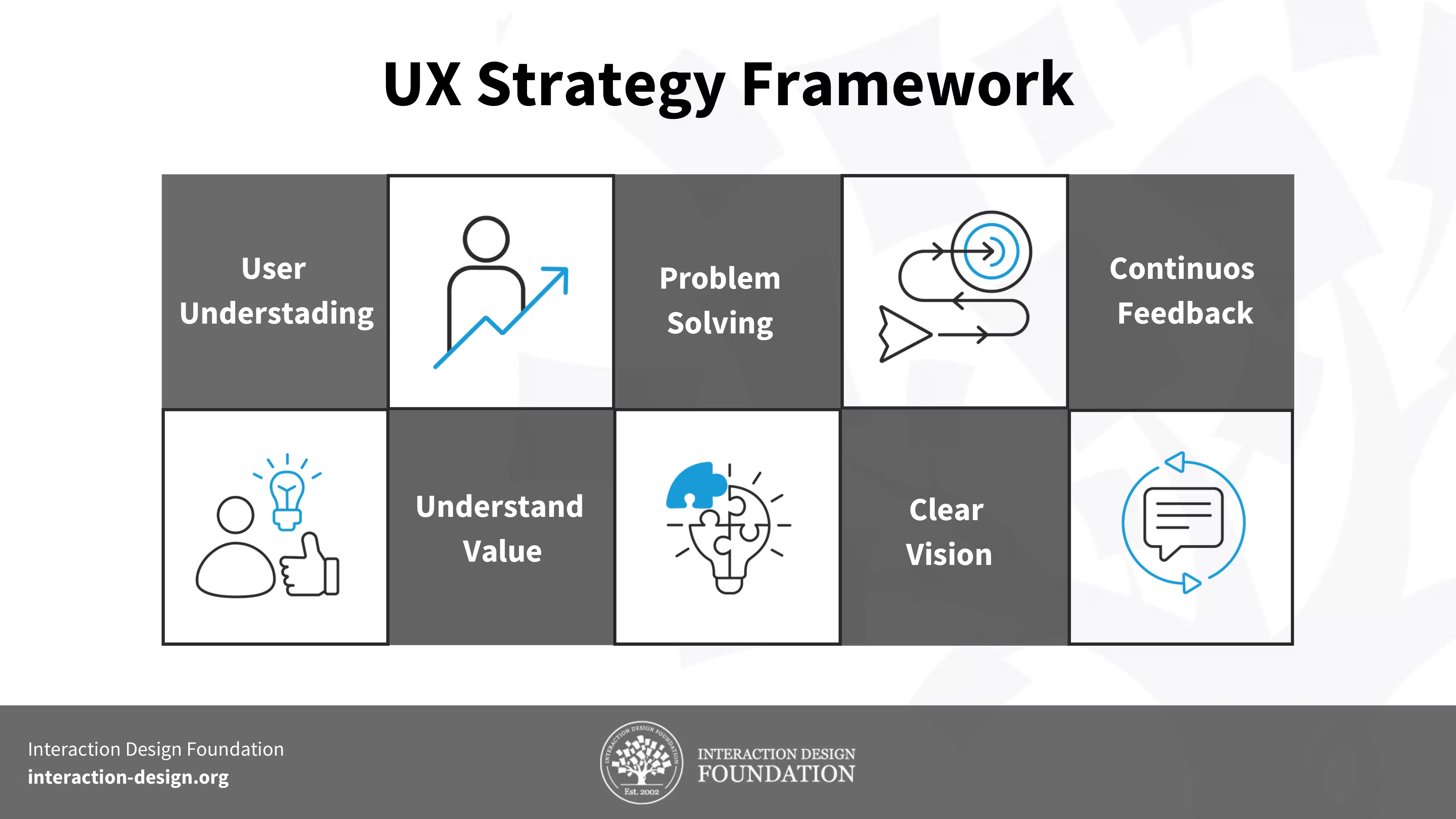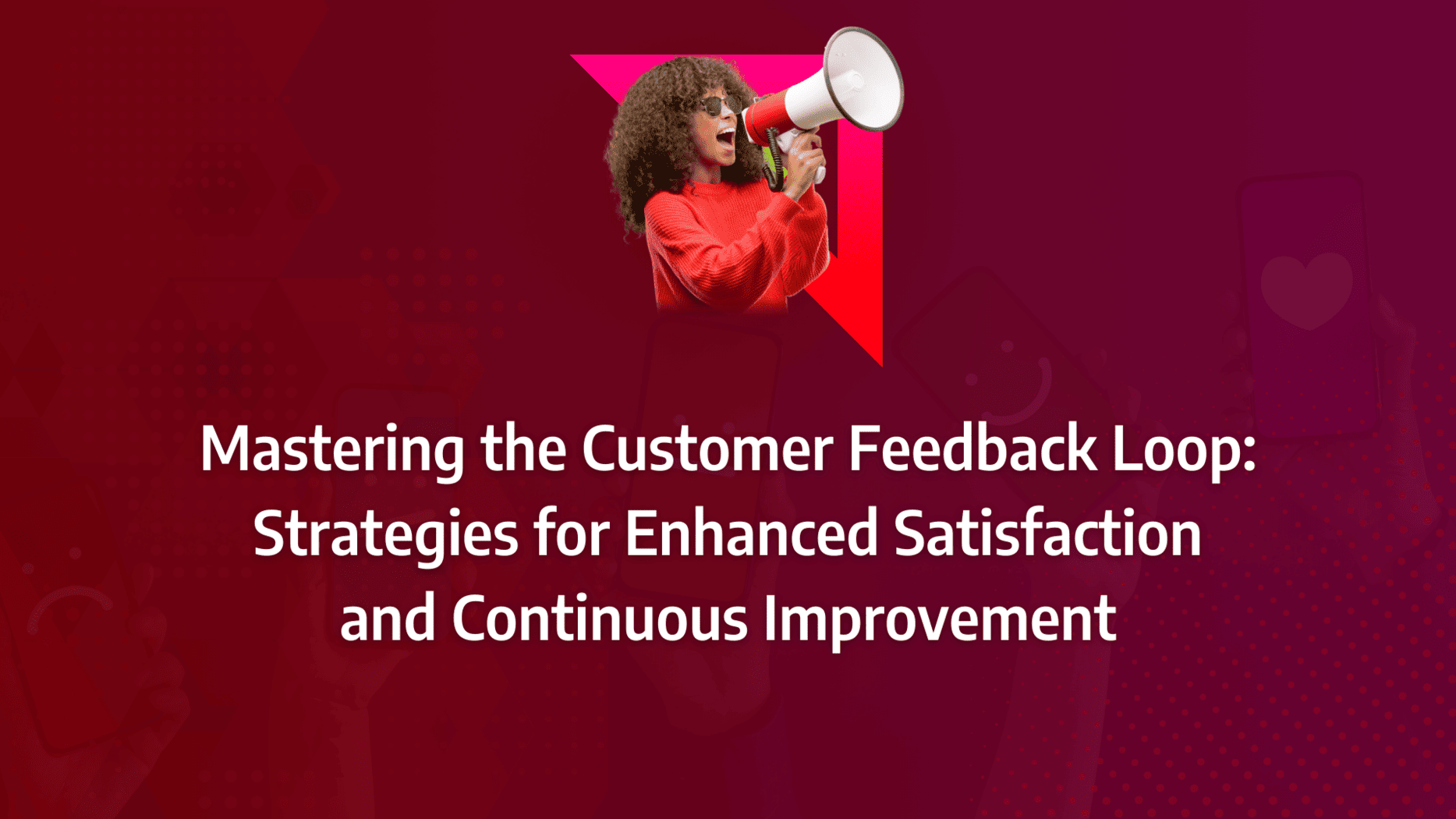When was the last time you acted on customer feedback? In a world where customer expectations are constantly evolving, mastering the customer feedback loop has become not just an option but a necessity. The power of an effective feedback loop lies in its ability to turn everyday interactions into invaluable insights, driving continuous improvement and customer satisfaction.
Imagine a system where every piece of feedback—positive or negative—feeds directly into refining your processes, boosting your customer’s experience, and ultimately, your bottom line.
In this post, we’ll explore the strategies to enhance your customer feedback loop, helping you close the loop on customer concerns and create a feedback-driven culture that keeps your business ahead of the curve. Whether you’re just starting or looking to fine-tune your existing systems, the actionable insights and step-by-step guidance provided here will ensure your feedback loop is not just a process but a powerful tool for growth.
- Understand the Value of a Feedback Loop: Implementing a customer feedback loop is crucial for gathering actionable insights that lead to continuous improvement and enhanced customer satisfaction.
- Differentiate Between Positive and Negative Feedback Loops: Recognise the unique roles of positive and negative feedback loops in reinforcing good practices and addressing customer concerns effectively.
- Follow a Structured Approach: Adopt a step-by-step process in managing feedback loops, from requesting feedback to implementing improvements and notifying customers of the actions taken.
- Avoid Common Pitfalls: Stay clear of pitfalls such as cherry-picking feedback or lack of clarity in responsibilities, which can undermine the effectiveness of your feedback loop.
- Leverage Feedback Collection Tools: Utilise various tools like surveys and feedback boxes to gather detailed insights, ensuring your questions are tailored to obtain actionable feedback.
- Use Customer Success Software: Implement customer success software to monitor and respond to feedback regularly, helping identify trends and prevent potential customer churn.
What is a Customer Feedback Loop?
A customer feedback loop is the systematic process of collecting feedback from customers and responding to that feedback to enhance the overall customer experience. This can be categorised into positive or negative customer feedback loops, depending on the nature of the feedback received.
“Closing the loop” involves ensuring that feedback is acknowledged and acted upon, thereby addressing issues or appreciating positive opinions shared by customers.
The steps in a customer feedback loop typically include:
- Requesting Feedback: Either soliciting feedback from customers or receiving unsolicited feedback.
- Gathering Information: Collecting detailed information through secondary questions in surveys or direct customer contact.
- Analysing Feedback: Evaluating whether the feedback pertains to a one-time incident or an ongoing issue, and identifying its cause.
- Determining Response: Deciding on the appropriate response, both to the customer and internally, to replicate positive experiences or avoid negative ones. Automating responses to simple issues can free up resources for more critical cases.
- Improving Customer Experience: Implementing internal actions based on the feedback to enhance customer experience.
- Notification: Informing customers and employees about the planned or executed actions resulting from the feedback.

Positive Customer Feedback Loops
A positive customer feedback loop occurs when a company listens to employees’ complaints and suggestions and uses this feedback to improve internal structure and workplace satisfaction. As employee happiness increases, so do the company’s profits. It’s termed a loop because the feedback (output) is utilised as input for restructuring the work culture, creating a continuous cycle.
Scenario
Event: A customer contacts a service representative and has a positive experience. They leave favourable feedback on a survey following the interaction.
The Feedback Loop: Thank the customer for their feedback and inform them that it will be shared with the specific service agent involved.
Steps to Take:
- Determine if the positive feedback is a consistent feature across all service agents or specific to the particular agent.
- Inform the service representative of their commendable performance.
- Conduct workshops or tutorials to help other service agents learn from this exemplary behaviour.
- Establish an internal rewards scheme for positive feedback in customer service.
- Showcase your customer service agents through social media stories and website case studies highlighting your corporate culture.

Negative Customer Feedback Loops
A negative customer feedback loop involves listening to customers’ complaints or grievances and using this feedback to improve products or customer service. Similar to positive loops, this creates a cycle where customer feedback (output) informs improvements (input).
Scenario
Problem: A customer encounters an issue with a product and cannot resolve it via the online customer service portal. They call customer service but face long wait times, leading to a dissatisfied experience despite the eventual resolution. On their CSAT survey, they express their dissatisfaction due to the lengthy process.
The Feedback Loop: First, thank the customer for their feedback with a personalised response (e.g., “We’re sorry to hear about your experience today”).
Steps to Take:
- Evaluate whether the issue is a one-time problem during peak times or an ongoing issue by analysing feedback trends.
- Offer compensation, such as a discount, for their trouble.
- Notify customer service staff about this potential issue.
- Update the online customer service hub to highlight the resolution to this issue.
- Introduce a new customer service channel, such as a chatbot, to reduce telephone line load.
- Inform the customer and others that you have received and acted upon their feedback to improve customer service policies.
What Matters Most?
From our experience, prioritising actionable feedback transforms customer interactions into sustained loyalty by turning insights into continuous improvements. Clients often discover that embedding feedback within the company culture, especially when leadership and employees are aligned around customer priorities, fosters a truly customer-centric organisation. Typically, a unified view of customer feedback across all touchpoints consolidates insights, enabling holistic and informed strategic decision-making. We’ve seen how these practices guide businesses toward more meaningful and impactful customer relationships, providing a foundation for long-term success.Get In Touch
How can I gather customer feedback effectively and analyse it for improvement?
Main Methods
- Surveys Surveys remain one of the most effective methods for collecting specific feedback on issues your business aims to address. By crafting questions tailored to gather insights on particular challenges, you can obtain actionable feedback. Implementing surveys is straightforward with free tools such as SurveyMonkey, Google Forms, and Typeform.
- Feedback Boxes Feedback boxes allow you to gather customer input without disrupting their shopping experience. These one-question forms are strategically placed in visible areas on your website. While surveys solicit targeted feedback, feedback boxes often uncover unexpected insights. Customers might report bugs or user experience issues that a structured survey might miss.
- Checking Heatmaps Heatmaps provide a visual representation of how visitors interact with your website, offering indirect feedback. Tools like Hotjar track which sections of your site attract the most attention, where users click, and where they encounter difficulties. This method helps you understand user behaviour without direct questioning.
Niche Methods
- Use Icons to Simplify Feedback Not all customers have the time or inclination to complete lengthy surveys. Clickable icons, which allow users to express their sentiments quickly, can significantly boost response rates. This method is fast, easy, and encourages broader participation.
- Get Feedback from Live Chat Sessions Live chat provides an opportunity for immediate feedback from customers who have just received assistance. Positive experiences can be immediately acknowledged, while negative ones can be promptly addressed to regain customer trust. Be mindful that emotions are heightened immediately after an interaction, so the feedback will be raw and highly accurate.
- Use NPS to Evaluate Loyalty Net Promoter Score (NPS) is a vital benchmark for gauging customer loyalty, measuring the likelihood of customers recommending your brand to others. Typically, NPS surveys ask customers to rate this likelihood on a scale from 1 to 10. Research indicates that companies with the highest NPS in their industry tend to outperform their competitors significantly.
Integrating These Strategies
Effective customer feedback systems leverage a variety of methods to ensure comprehensive insights. By implementing continuous feedback loops, businesses can consistently refine their approaches based on real-time data. Employing a mix of surveys, feedback boxes, and heatmaps provides a balanced perspective on customer satisfaction and areas needing improvement.

What strategies can I use to incorporate NPS into my customer feedback processes?
What is a Net Promoter Score (NPS)?
Before delving into NPS survey best practices, let’s revisit the basics of Net Promoter Score (NPS). NPS is a metric used to gauge customer loyalty, ranging from -100 to 100. It is calculated by asking customers how likely they are to recommend your product or service to a friend or colleague on a scale from one to ten. The feedback collected through NPS surveys can provide invaluable insights to help improve your offerings and boost customer satisfaction.
Best Practices:
- Customise Your NPS Survey In today’s digital age, people receive an overwhelming number of emails daily, increasing the likelihood of them ignoring standard form letters. Therefore, customising your NPS survey is crucial. Personalise your survey by using the recipient’s name in the introduction and highlighting the specific product they purchased in the email subject line. This personal touch can significantly improve response rates and engagement.
- Survey Throughout the Buyer’s Journey Customers interact with your company at various stages, and each touchpoint should uphold the same level of excellence. For instance, a customer may have a flawless experience with your product but encounter frustration due to a shipping delay. By surveying throughout the buyer’s journey, you can capture these varied experiences and address issues proactively, ensuring a consistently high standard of service.
- Use Responsive Survey Design With the myriad of mobile devices available today, each with different screen resolutions, it’s essential that your surveys are mobile-friendly. Poorly formatted surveys can render badly on some screens, leading to images and text being cut off. One of the simplest ways to increase NPS survey response rates is to ensure your survey design is responsive, adapting seamlessly to different devices and screen sizes.

Source: SurveyMonkey
Integrating NPS into Your Customer Feedback Systems
Incorporating NPS into your broader customer feedback systems can help create a continuous feedback loop, enabling you to refine your products and services continually. NPS is not just a standalone metric; it is a crucial component of effective customer feedback strategies. By customising your surveys, engaging customers throughout their journey, and ensuring your surveys are accessible on all devices, you can harness the full potential of NPS to drive customer loyalty and business growth.
Analysing Customer Feedback: Top Strategies
Effective Customer Feedback Analysis
Customer feedback analysis is essential for organisations seeking to aggregate customer feedback data and identify key bottlenecks and trends. Instead of manually analysing data using external tools, a robust customer feedback analytics solution can sort and display this data in one place through organised dashboards and charts. This approach streamlines the process and provides actionable insights.
Categorise Customer Feedback
Quickly, you will notice that feedback naturally falls into specific categories, such as the speed of your service, accuracy, courtesy, helpfulness of staff, price, choice of products, and availability or location. Categorising feedback provides a broader picture of how customers view your business and services. Some feedback may touch on multiple categories, and you should file these accordingly to get a comprehensive view.
Identify Root Causes
Understanding what drives customer loyalty is crucial for improvement. Analysing the root causes of feedback should take precedence over addressing more complex or niche problems. This approach ensures that you tackle the underlying issues affecting customer satisfaction.
Spot Trends in Customer Feedback
Individual feedback can be significant, but it should be contextualised within overall sales trends. For example, while one customer might have a poor experience with a product, others might rate it highly. Identifying these trends helps in making informed decisions that reflect the majority’s experience.
Utilise Automated Tools
If your feedback process generates a high volume of responses, consider using specialised and automated tools to manage it effectively. Tools for text and sentiment analysis can identify frequently used words and their combinations, as well as determine if feedback is positive, neutral, or negative. This automation reduces the manual workload and speeds up the analysis process.

Our Tactical Recommendations
In our work, closing the loop with customers by directly responding to their feedback is not just courteous but critical for reinforcing trust and enhancing loyalty. Clients often discover that leveraging positive feedback as testimonials or case studies doesn’t just amplify marketing efforts; it strengthens the customer relationship by showing their voices matter. Typically, customising feedback mechanisms to align with specific customer segments ensures that insights are relevant and actionable, leading to more precise service improvements. These practical steps often result in immediate, tangible benefits, driving both satisfaction and retention.Get In Touch
Best Customer Feedback Analysis Tools
Idiomatic: Idiomatic is a voice-of-the-customer tool designed for ease of use. It does not require AI training before you begin analysis, aiming to make customer feedback analysis as straightforward as possible.
Pros:
- Easy setup and use
- Quick extraction of insights through AI
Cons:
- Not fully self-service, as users may feel dependent on customer success teams to customise the dashboard
SurveyMonkey: SurveyMonkey is a widely recognised tool for creating surveys and accessing basic insights, making it ideal for those new to customer feedback analysis.
Pros:
- Customisable survey creation and management in one software
Cons:
- Not robust enough for larger datasets or sophisticated analysis. For deeper insights, especially from social media feedback, alternative tools may be needed.
SentiSum: SentiSum is a flexible, easy-to-use tool for customer feedback analysis. Leveraging AI, it provides insights from across all support channels, surveys, and reviews to aid in making confident customer experience decisions.
Feedback Teams Can:
- Link customer survey data with support tickets, allowing for cross-referencing of data for relevant insights
- Standardise feedback analysis across all tools, ensuring consistency and trustworthiness in insights
What steps should I take to effectively close the customer feedback loop?
Focus Your Attention Ruthlessly
Prioritising product feedback is crucial because it’s impractical to address every request and message. Attempting to respond to all feedback is not an efficient use of your limited resources. Instead, identify the top 10 percent of topics within your feedback. These key issues likely represent 40 to 70 percent of your total feedback volume, given that the most significant topics are frequently raised by multiple customers. The more often you hear about a problem, the more pressing and widespread it is likely to be for your users.
Remove Internal Bottlenecks
To streamline the customer feedback loop, it’s essential to break down internal silos. While it’s common for the customer success team to handle most customer communication, the entire organisation should be empowered and encouraged to engage with customers. This is particularly important for asking follow-up questions about suggestions and closing the loop on feedback. Ensure that all customer communications are documented to avoid sending duplicate or conflicting messages.
Source: Forrester Research
Aggregate and Centralise Customer Feedback
Feedback is often either aggregated or centralised, but for maximum efficiency, you need to do both. Turning feedback into action is challenging when it’s scattered across various inconsistent spreadsheets or buried in a folder. Organise the feedback you collect in a single, centralised location to make it useful and easily accessible. This ensures that valuable insights can benefit every team within your organisation.
What common pitfalls should I avoid when managing customer feedback loops?
Mistake 1: Cherry-Picking Customers
Handling a large volume of customer responses can be overwhelming, making it tempting to cherry-pick customers. It’s crucial to design a strategy that defines specific parameters for triggering a closed-loop response. Without a defined process, department leaders may choose to respond only to customers requiring the least effort, risking the neglect of some of your most loyal and valuable customers. These customers, with more complex needs, might ultimately decide to take their business elsewhere if overlooked.
Mistake 2: Lack of Clarity About Responsibility
In large organisations, it’s easy to lose track of who is responsible for closing the loop with a customer, especially when their experience spans multiple operational areas and departments. For instance, in the hospitality industry, a customer may interact with various teams—hotel staff, food and beverage, entertainment—making it harder to pinpoint who is ultimately responsible for follow-up. Ensuring clear responsibility is key to effective customer feedback systems.
Mistake 3: Centralising Customer Feedback Closed-Loop Responses
Different approaches exist for managing closed-loop responses. Some large global hospitality organisations centralise their closed-loop activities, with one group responsible for all follow-ups. Others decentralise the process, allowing the department where the issue occurred to handle the response. Both methods have pros and cons, but it’s essential to ensure whichever method you choose is well-organised and clear to all involved parties.







